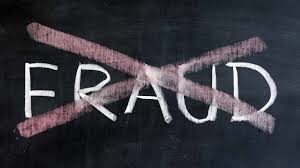The Growing Problem of Corporate Fraud (Part I of III)
 For the love of money is the root of all evil – 1 Timothy 6:10, King James Version, The Bible
For the love of money is the root of all evil – 1 Timothy 6:10, King James Version, The Bible
Corporate bribery requires money. How is that for something obvious.
Companies face a variety of threats – one enduring threat is the risk of fraud or theft. Unfortunately, employee fraud is all too common.
PWC’s 2018 Global Economic Crime and Fraud Survey reported that “only 49% of global organizations said they’d been a victim of fraud and economic crime. (Here). However, we know this number should be much higher. So what about the other 51%?” PWC suggests that the other 51% of corporate organizations are blissfully ignorant and ignoring their obvious fraud problem.
In the new environment of aggressive enforcement, governance surveillance, and stakeholder focus over corporate organizations, corporations can no longer view fraud as a simple cost of doing business. The risks and problems are increasing and the consequences of ineffective fraud controls are significant.
There is no question that fraud awareness is increasing. Companies are recognizing that fraud is growing concern. The PWC survey result of 49 percent is the highest level of awareness over the last 18 years.
Companies are experiencing increased fraud as part of an overall increase in economic crime around the globe. Reported economic crime has increased over the last few years and is continuing to increase. As a result, companies face ever-increasing risks of fraud. In response, companies are increasing their spending on fraud prevention and detection strategies. The cornerstone of this effort is technology and data analytics. Companies are exploring the use of whistleblower programs to encourage reporting and detection.
Like many other risks, companies have to adopt proactive measures, beginning with a risk assessment. Many companies are beginning to conduct regular fraud or economic crime risk assessments on a regular basis. Such an assessment could easily be included in an anti-corruption, anti-money laundering and trade controls risk assessment.
Companies are not going to be surprised by the results of their risk assessments. Asset misappropriation, consumer fraud and cybercrime are likely to round out the top-3 risks.
The PWC survey confirmed what we already know – the incidence of economic crime committed by internal actors has increased to 52 percent. Interestingly, the proportion of economic crimes committed by senior management increased from 2016, 16 percent, to 24 percent in 2018.
Fraud, however, is not a problem limited to internal actors – it extends to a company’s third parties. Add that to the list of risks requiring due diligence and third-party risk management. According to PWC, 68 percent of external actors committing fraud are agents, vendors, shared services providers and customers.
 The cost of fraud to an organization is much more than the theft itself. Secondary costs include investigations and other interventions. In response, companies are definitely increasing their spending on fraud prevention and detection. Forty-two percent of responding companies have increased their spending on economic crime and fraud.
The cost of fraud to an organization is much more than the theft itself. Secondary costs include investigations and other interventions. In response, companies are definitely increasing their spending on fraud prevention and detection. Forty-two percent of responding companies have increased their spending on economic crime and fraud.
Companies have access to a number of technologies to defend themselves against fraud, which are aimed at monitoring, analyzing and predicting human conduct, including machine learning, predictive analytics and other artificial intelligence techniques. Technology is expensive and difficult to implement across an organization.















